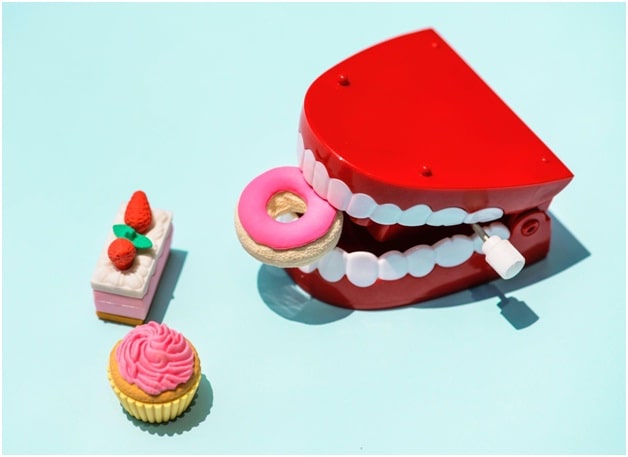
We all understand that brushing at least twice a day leads to a healthier and happier mouth. Flossing does too, but many people choose to skip this part of their daily oral hygiene. Or if they do floss, it’s sporadic rather than routine.
But is flossing really necessary? Absolutely.
Flossing daily in conjunction with brushing twice per day is your first line of defence against oral health issues. If you do not floss, plaque can build up within the spaces your toothbrush cannot reach, creating a breeding ground for bad bacteria between your teeth and under your gum line.
Flossing is a big deal. And, in fact, it’s actually a huge problem to skip flossing. We’ll discuss why not flossing is problematic, as well as the benefits of flossing, and how to floss the right way.
Not Flossing Makes Your Teeth Look and Feel Bad
Firstly, the plaque buildup from not flossing will boost your risk of developing cavities. These can form on the surfaces of your teeth or between them. Heavy plaque buildup will also darken and stain your teeth, making them an ugly yellow hue.
Your Breath Will Stink
Have you ever experienced bad breath in public? It’s not fun, is it? Even if you brush regularly, you can still experience stinky breath due to buildups of food or not reaching bacteria in hard-to-reach crevices of your mouth. Regularly flossing can clean out those pesky places and kill bacteria while removing particles of food.
Disease Development and Losing Teeth
If you regularly skip flossing, you could be putting yourself at risk for gum disease, also referred to as gingivitis. Severe cases of this disease include:
- Red, puffy, or receding gums – Healthy gums are firm and pink. If your gums before red or swollen and are tender to the touch, chances are that you have gingivitis. Another sign of this dental dilemma are gums pulling away from the teeth.
- Blood in the sink after you brush or floss – Common as it may seem, it’s not natural for bleeding to occur after you brush or floss. You may assume that you’re brushing too vigorously, but seeing blood in the sink continuously may be a sign of gingivitis.
- Bad breath – Foul breath could be an indicator of early gum disease stages. Bad breath could be a sign of plaque and bacteria buildup that isn’t being removed correctly.
- Pain and sensitivity – If your symptoms are not addressed, the gingivitis could get worse and progress to periodontitis. Signs of this include pain while chewing, sensitivity to hot and cold foods, loose teeth, and receding gum lines.
Affecting More than Your Mouth

Cavities and gum disease can be brutal, but poor flossing can also harm other parts of your body. Tooth and gum problems have been linked to heart disease, premature birth, and even strokes.
People with gum disease are two to three times likely to have a stroke, heart attack, or another serious cardiovascular event.
Flossing the Right Way
Now that you know the issues that happen when you don’t floss daily, it is time to learn how to floss the correct way:
- Wrap the ends of the floss around your middle fingers.
- Hold the floss firmly between your thumb and index fingers and gently guide it between your teeth, curving the dental floss to reach all of the contours of your teeth.
- As you reach your gum line, shape the floss into a “C” shape and move it gently up and down.
- Does this on the other side of the tooth, then repeat the steps for the rest of your teeth?
- Be sure to reach your back teeth, where most decay and bacteria can appear.
Choosing Your Floss
It is not only important to floss every day but to select the right type of floss. Here is some information about the different types of dental flosses available:
- Dental tape is wider floss. This could be a better choice for people with bridgework. Wider floss is also suitable for people who have wider-than-average space between their teeth.
- If you have closely spaced teeth, opt for waxed floss. The wax helps the dental floss to glide between tiny spaces.
- Unwaxed floss will make squeaking sounds against clean teeth. This is an indication that all of the plaque has been removed.
- Dental picks are Y-shaped tools that hold floss between two prongs. They are great for people who have trouble manipulating the floss or cannot fit their fingers into their mouths while flossing.
Which type of dental floss you pick depends greatly upon your personal preferences, mouth, and dentist’s recommendations.
How to Make Flossing a Habit

If you don’t floss every day, there are steps that you can take in order for it to become a daily routine.
- Make it easy – Keep dental floss on your bathroom sink as a visual reminder and to give you easy access.
- Take the pressure off – It’s easy to get frustrated if you miss a day of flossing. Start once a week, then build up your flossing gradually to once every couple of days, and then to every day.
- Focus on the enjoyment – Many people put flossing off because it’s boring or hard or unpleasant. Allow yourself to be present and enjoy the moment. Think to yourself how much you love the feeling of clean, fresh teeth.
Flossing Facts
- Flossing before brushing can help the fluoride from your toothpaste better reach all surfaces of your teeth.
- In order to floss effectively, you will need to use a piece of floss that is 18 to 20 inches long.
- You should use a clean section of floss to clean around each individual tooth. This will avoid cross contamination and transferring food particles to other areas of your mouth.
Flossing is essential for not only a healthy mouth but for your overall wellness. Get into the habit of flossing daily to maintain a gorgeous grin and healthy body.
